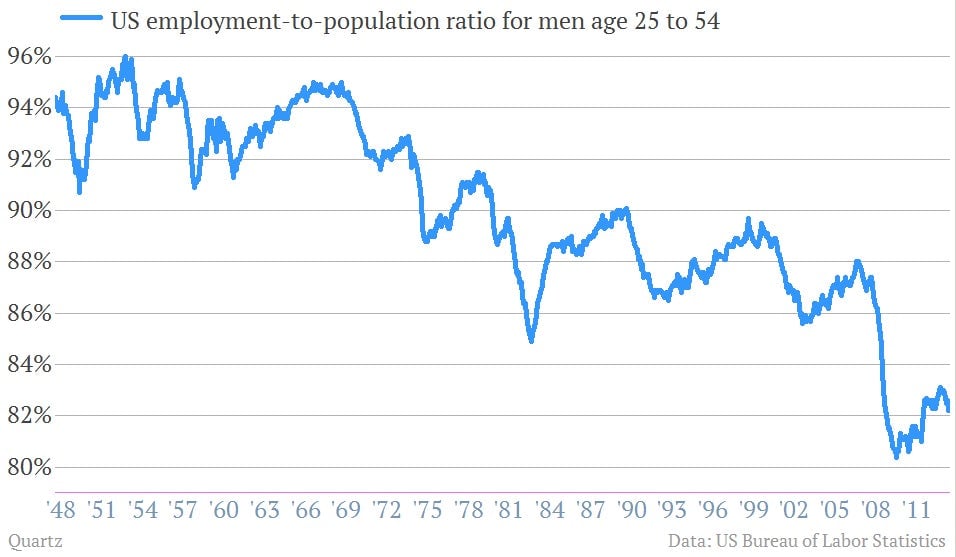Digging deeper into the surprisingly strong US jobs report
The US jobs report was pretty strong, even after digging into the details.

The US jobs report was pretty strong, even after digging into the details.
Unemployment felt to 7%, a level we haven’t seen in quite some time.
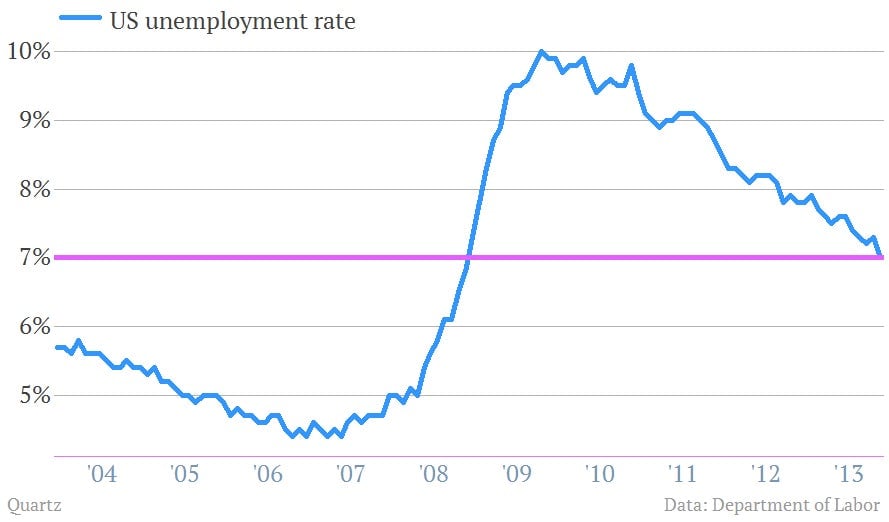
But what’s even more heartening is the fact that the decline in unemployment came for the right reasons. The labor force actually grew quite a bit, which is likely a reflection of the end of a partial government shutdown in October, which skewed the data and resulted in a large decline in the labor force in October.
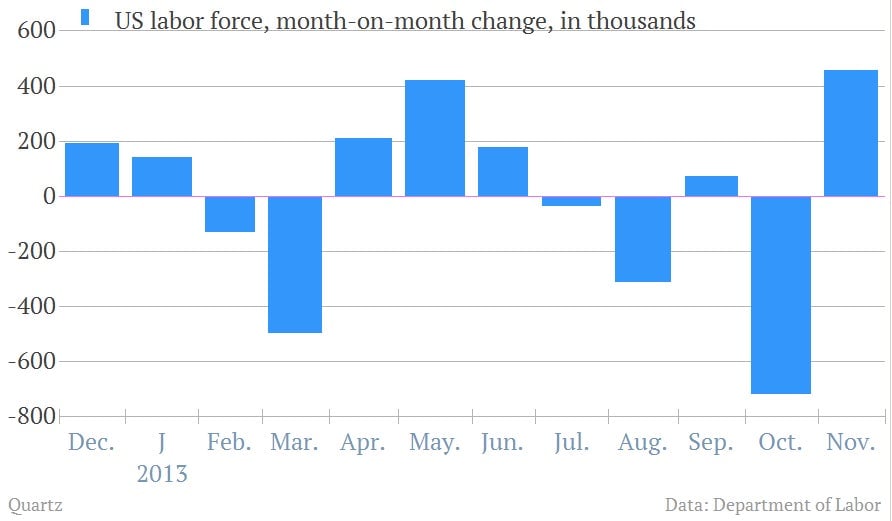
In fact, the impact of the US government shutdown shows up in a few places in today’s data. For instance the household survey of employment—the jobs report is composed of two surveys, one of employers and one of households—shows wild swings over the last couple of months, which is the impact of government worker furloughs.
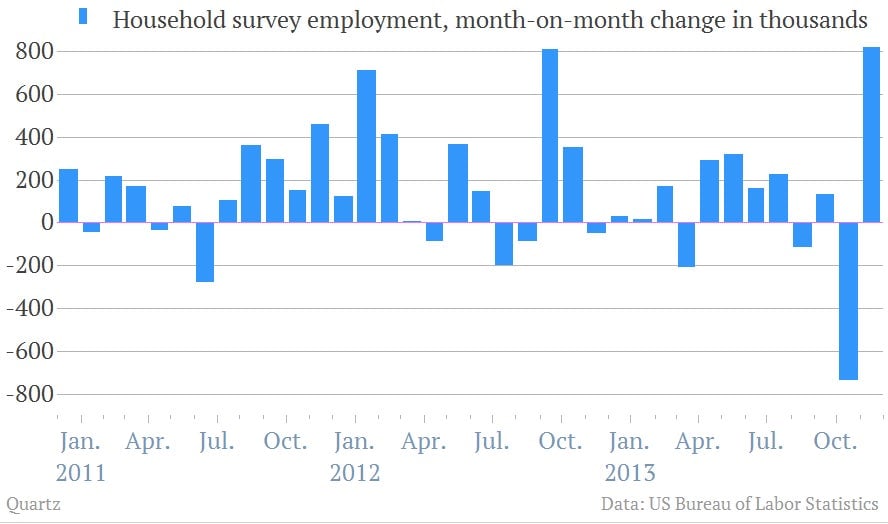
And the return of federal workers into the “employed” column helped pull the US labor force participation rate back up to 63%, from 62.8%—still quite low by historical standards.

The changing nature of the US workforce is also visible through the employment-to-population ratio. This number tells you plain-and-simple the percentage of US adults that have jobs. (It avoids any of the issues over whether you’re actively looking for a job, and hence part of the labor force.) It rose slightly to 58.6% in November. But it’s still really low.
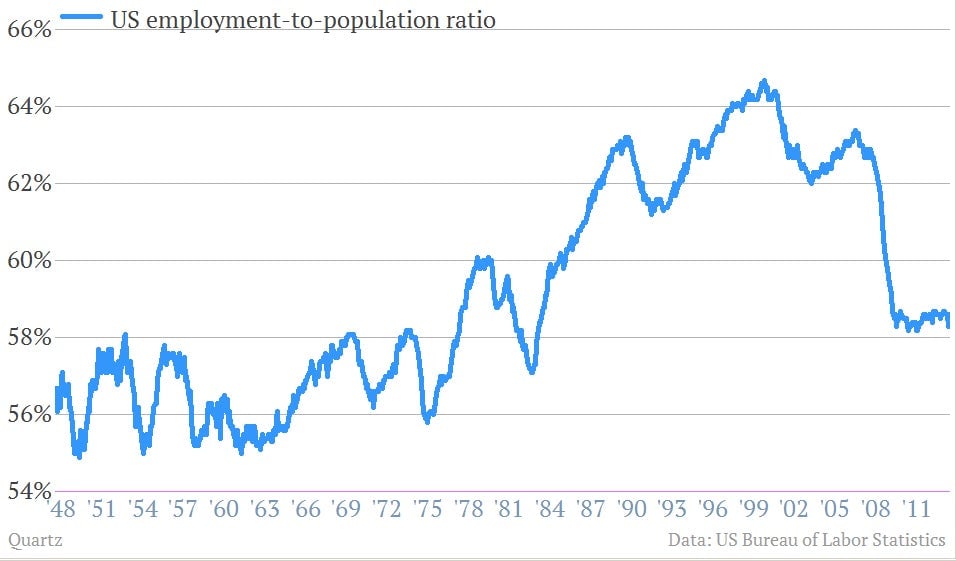
Why? Well, economists think it’s a combination of things. One part is demographic. The aging of the baby boom generation means a large chunk of the population will be retiring over the next few years.
But the decline doesn’t seem to be all about the aging baby boom generation. For example, if you just look at prime age working men, the employment-to-population ratio also appears quite low. That may indicate that lasting damage has been done to the US workforce by the deep recession and long, slow recovery.
